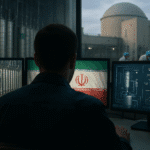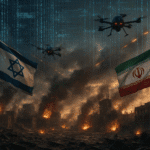Former U.S. President Donald Trump’s claims of brokering the May ceasefire between India and Pakistan appear increasingly at odds with Prime Minister Narendra Modi’s firm denial. Trump repeatedly stated that Washington had played a decisive role, even hinting that inducements like potential trade deals prompted India and Pakistan to stand down. Modi, during a June 18 phone call and reinforced by Foreign Secretary Vikram Misri, categorically emphasized that all talks were conducted through direct military-to-military channels at Pakistan’s request—and that India “does not and will never accept third-party mediation”. This direct contradiction places U.S. and Indian narratives on a collision course—with significant implications for both bilateral relations and regional diplomacy.
Strategic Implications for India–U.S. Relations
Modi’s rejection of any U.S. role signals a reassertion of diplomatic sovereignty. India is clearly safeguarding its long-held stance that Kashmir-related issues should remain resolutely bilateral. In contrast, Trump’s narrative seeks to highlight Washington as a regional peacemaker—perhaps positioning the U.S. as a broker in strategic plays aimed at elevating its influence in South Asia. This divergence is likely to complicate the two nations’ ability to present a united front on broader issues, from trade negotiations to defense cooperation, as both seem to now be fighting for narrative primacy.
Repercussions for U.S. Influence in South Asia
Trump’s visit to host Pakistani Army Chief Asim Munir at the White House was a first of its kind, elevating Islamabad’s military stature—while inflaming New Delhi’s concerns. Coupled with Trump’s persistent claims of U.S.-brokered success in ending hostilities, these moves may be read in Islamabad as signs of renewed American engagement. For India, however, this reinforces a narrative of overreach: the U.S. stepping into a bilateral issue that New Delhi believes it should handle on its own.
Beyond ceremony, this signals a potential recalibration of influence: Washington may be attempting to reassert relevance in a region where China remains deeply embedded through projects like the CPEC and defense ties with Pakistan.
Polarizing Domestic Narratives
Within India, Modi’s rebuttal undeniably serves to bolster nationalist credentials—standing firm against foreign intervention. The opposition Congress, however, criticized the contradictory nature of Modi’s messaging and called for a parliamentary briefing to clarify the gap between Trump’s and Modi’s accounts. Conversely, Trump’s portrayal of himself as the person who “stopped a war” resonates with his America-first legacy, while aligning with narratives in Pakistan that champion Munir’s restraint. This unfolding story is therefore likely to be leveraged across domestic political arenas in all three countries.
What This Means Going Forward
If India remains resolute in removing Washington from the Kashmir equation, future cooperation with the U.S. may be subjected to more cautious framing—especially on issues touching Indo-Pakistan tensions. Pakistan likely sees a green light for deeper engagement with Washington, possibly recalibrating the security-development balance with both the U.S. and China. And for the U.S., the dispute signals that transactional diplomacy—like trade-linked inducements—may be more easily challenged in regional theaters with strong nationalist narratives.
A Final Note
At surface level, this episode may look like a debate over who gets credit for a short-lived pause in hostilities. But beneath lies a far more consequential struggle over diplomatic influence, narrative ownership, and strategic alignment in South Asia. With India asserting unilateralism, the U.S. pushing its international peacemaker identity, and Pakistan positioning itself between superpowers, this clash over “who mediated what” may in fact be a realignment of regional power dynamics.
















